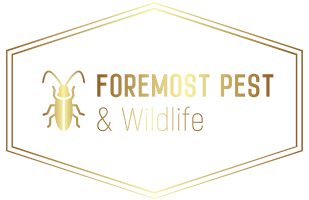Termites
Termites are the most important wood-destroying structural pests in the southern United States. According to some estimates, over $2 billion are spent annually in the United States controlling or preventing termite infestations. In North Carolina, our main problem is with subterranean termites, i.e., termites that normally live below ground and may move up into a structure where they cause damage. Termites are “social insects,” i.e., they live in a nest or colony which is typically found underground, often near a tree, stump, wood pile or other source of ‘food.’ Each colony contains a king and queen that are brown in color. At this life stage, they are wingless, but they started out with wings and “swarmed” from their original home or nesting site where they developed. The queen is able to lay thousands of eggs each year. and continues to do so for about five years. There are also soldier termites which have large heads equipped with large mandibles (“jaws”). The soldiers protect the colony from invaders (such as ants). The bulk of the termite colony consists of thousands of whitish workers who serve various roles. Some workers maintain the nesting site and take care of the queen and the newly hatching immatures (sometimes called “larvae”). Other workers go out and actively forage (search) for food. The foraging workers are the ones that we typically find infesting wood. As the colony grows, the workers expand both the nest and their feeding area. Depending on the species of termite, a mature colony can contain 200,000 to 2,000,000 workers, although many colonies contain as few as 50,000-60,000. Studies have also shown that termites from a single colony may forage across an area of one-third acre and travel over 200 feet from their nest. One acre of land may support several termite colonies (although this doesn’t mean that all of them are invading your home). A large termite colony does not usually occupy a single underground nest. As the foraging area expands the colony actually splits to form several smaller “nesting sites.”
Termites are the most important wood-destroying structural pests in the southern United States. According to some estimates, over $2 billion are spent annually in the United States controlling or preventing termite infestations. In North Carolina, our main problem is with subterranean termites, i.e., termites that normally live below ground and may move up into a structure where they cause damage. Termites are “social insects,” i.e., they live in a nest or colony which is typically found underground, often near a tree, stump, wood pile or other source of ‘food.’ Each colony contains a king and queen that are brown in color. At this life stage, they are wingless, but they started out with wings and “swarmed” from their original home or nesting site where they developed. The queen is able to lay thousands of eggs each year. and continues to do so for about five years. There are also soldier termites which have large heads equipped with large mandibles (“jaws”). The soldiers protect the colony from invaders (such as ants). The bulk of the termite colony consists of thousands of whitish workers who serve various roles. Some workers maintain the nesting site and take care of the queen and the newly hatching immatures (sometimes called “larvae”). Other workers go out and actively forage (search) for food. The foraging workers are the ones that we typically find infesting wood. As the colony grows, the workers expand both the nest and their feeding area. Depending on the species of termite, a mature colony can contain 200,000 to 2,000,000 workers, although many colonies contain as few as 50,000-60,000. Studies have also shown that termites from a single colony may forage across an area of one-third acre and travel over 200 feet from their nest. One acre of land may support several termite colonies (although this doesn’t mean that all of them are invading your home). A large termite colony does not usually occupy a single underground nest. As the foraging area expands the colony actually splits to form several smaller “nesting sites.”
Authors: Michael Waldvogel, Extension Specialist (Household & Structural Entomology), Entomology & Plant Pathology
Patricia Alder, Training Coordinator, Entomology & Plant Pathology

